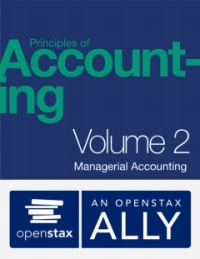More Info The company is considering two possible expansion plans. Plan A would open eight smaller shops at a cost of $8,600,000. Expected annual net cash inflows are $1,625,000 for 10 years, with zero residual value at the end of 10 years. Under Plan B, Lajos Company would open three larger shops at a cost of $8,100,000. This plan is expected to generate net cash inflows of $1,030,000 per year for 10 years, the estimated useful life of the properties. Estimated residual value for Plan B is $990,000. Lajos Company uses straight-line depreciation and requires an annual return of 7%. Print Done Yolun 10. Nutan Anny v Factor pv Years Inflow (1-7%, n=10) (1-7% 1 - 10 Present value of annuity 10 Present value of residual value Total PV of cash inflows 0 Initial Investment Net present value of Plan B Calculate the profitability index of these two plans. (Round to two decimal places X.XX.) Present value of net cash inflows + Initial investment Profitability index Plan A Plan B Requirement 2. What are the strengths and weaknesses of these capital budgeting methods? Match the term with the strengths and weaknesses listed for each of the four capital budgeting models. Capital Budgeting Method Strengths/Weaknesses of Capital Budgeting Method Net present value is based on cash flows, can be used to assess profitabilty, and takes into account the time value of money. It has none of the weaknesses of the other models. Payback method Is easy to understand, is based on cash flows, and highlights risks. However, it ignores profitability and the time value of money, ARR Can be used to assess profitability, but it ignores the time value of money Profitability index It allows us to compare alternative investments in present value terms and it also accounts for differences in the investments initial cost. It has none of the weaknesses of the other models Requirement 3. Which expansion plan should Lolos Company choose? Why? Reference -X h tid lable) bble) Present Value of $1 Periods 1% 2% 3% 4% 5% 6% 7% 8% 9% 10% 12% 14% 15% 16% 18% Period 1 20% 0.990 0.9800.971 0.962 0.952 0.943 0.935 0.926 0.917 0.909 0.893 0.877 0870 0.862 0.847 0.833 Period 2 0.980 0.961 0.943 0.925 0.907 0.890 0.873 0.8570.842 0.826 0.797 0.769 0.756 0.743 0.718 0.694 Period 3 0.971 0.942 0.915 0.889 0.864 0.840 0.816 0.794 0.772 0.751 0.7120675 0.658 0.641 0.609 0.579 Period 4 0.961 0.924 0.888 0.855 0.823 0.792 0.763 0.735 0.708 0.683 0.638 0.592 0.572 0.552 0516 0.482 Perlod 5 0 951 0.906 0.863 0.822 0.784 0.747 0.713 0.681 0.650 0.621 0.5670.519 0.497 0.476 0.437 0.402 Perlod 6 0.942 0.888 0.837 0.790 0.746 0.705 0.666 0.630 0596 0.564 0.5070456 0432 04100.370 0.335 Period 7 0.933 0.871 0.813 0.760 0.711 0.665 0.623 0.583 0.547 0.51304520.400 0.376 0.354 0.314 0279 Period 8 0.923 0.853 0.789 0.731 0.677 0.627 0.582 0.540 0.502 046704040351 0.327 0,305 0 206 0.233 Period 9 0.914 0.8370.766 0.703 0.645 0.592 0.544 0.500 0.460 0424 0.361 0.308 0284 0 263 0225 0.194 Period 10 0.905 0.820 0.744 0.676 0.614 0.558 0.508 0.463 0422 0.386 0322 0 270 0.247 0.227 0.191 0.162 Period 11 0.896 0.8040.722 0.650 0.585 0.527 0.47 0.429 0.38 0.350 0287 0237 0.215 0.195 0.162 0.135 Period 12 0.887 0.788 0.701 0625 0557 0.497 0.397 0.356 0.319 0.257 0.208 0.187 0.168 0.137 0.112 Period 13 0.879 0.773 0681 0.601 0.530 0.469 0415 0.368 0.326 0.290 0229 0.182 0.163 0.145 0.116 0.093 Period 14 0.870 0.758 0.661 0.577 0.505 0.442 0.388 0.340 0299 0.263 0.205 0.160 0.141 0.125 0.099 0.078 Period 15 0.861 0.7490,642 0.556 0.481 0.417 0.362 0.315 0.275 0.239 0.183 0.140 0.123 0.1080.084 0.065 Period 16 0.853 0.7280.623 0.534 0.4580.394 0.3390.292 0252 0218 0.163 0123 0.107 0.093 0.071 0054 Period 17 0.844 0.714 0.605 0.5130436 0.371 0.270 0 231 0.198 0.146 0108 0.093 0.080 0.060 0045 Period 18 0.836 0.7000.587 0.494 0416 0.350 0.296 0.250 0212 0.180 0.130 0.095 0.081 0.06 0.061 0.038 Period 19 0.828 0.686 0.570 0.475 0.396 0.331 0.277 0.232 0.194 0.164 0.116 0.083 0.070 0.060 0.043 0.031 Period 20 0.820 0.673 0.5540.456 0.377 0.3120 258 0.215 0.178 0.149 0.104 0.073 0.061 0.051 0.037 0.026 Period 21 0.811 0.660 0.538 0439 0.359 0.294 0 242 0.1990.164 0.135 0.093 0.064 0.053 0.044 0.031 0.022 Period 22 0.803 0.647 0.522 0.422 0.342 0.278 0.226 0.184 0.150 0.123 0.083 0.056 0.046 0.038 0.026 0.018 0.444 0.317 ter any facto 6 Print Done














